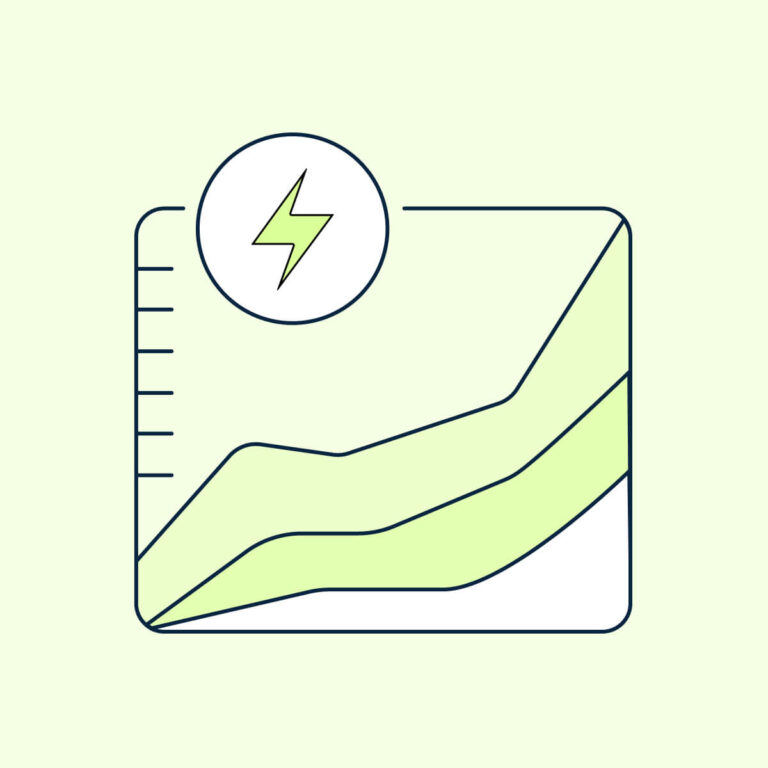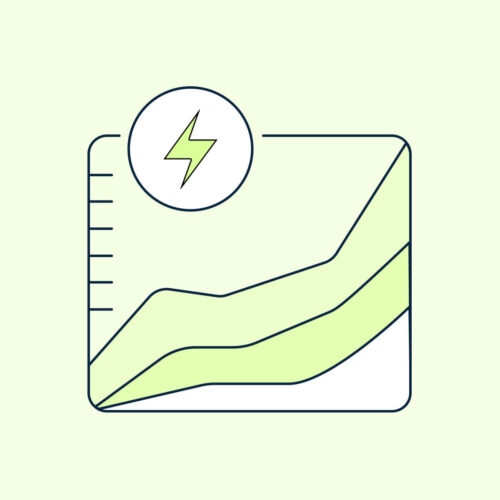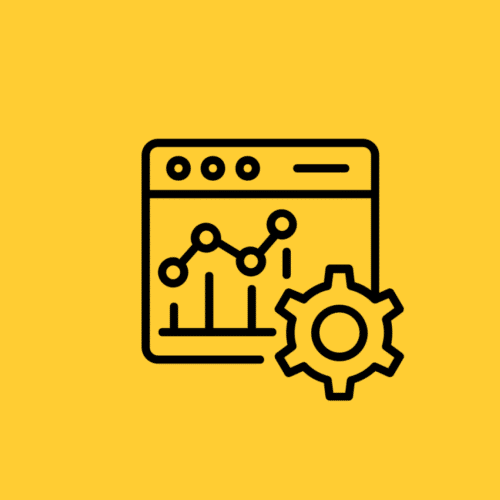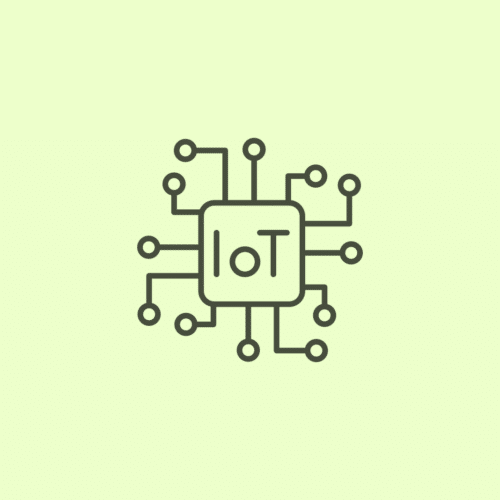BLOG
Driving ROI With Energy Management Dashboard Design: A 3-Step Guide for the Lighting Industry


In our ever-evolving, data-driven world, energy management in the lighting industry is an area ripe for innovation. Many companies, like Casambi, are looking for ways to decrease energy consumption, improve sustainability, and reduce operational costs. With the aid of modern technology, these goals are increasingly being met through interactive, data-centric dashboards. Casambi’s innovative smart lighting solutions, for instance, provide a perfect example of how these digital platforms provide real-time insights into energy usage patterns and efficiency measures, ultimately driving significant business return on investment (ROI). This article will explore how to build these energy management dashboards to glean actionable insights and ensure a robust ROI.
Step 1: Understand Your Objectives and Play with the “Art of the Possible”
Before diving into creating an energy management dashboard, it’s crucial to clearly define your objectives. The objectives can vary, from reducing energy consumption to maintaining regulatory compliance or improving cost-effectiveness, as Casambi has successfully done with its intelligent lighting control systems. By understanding these goals, you guide the data you need to collect, and the type of insights your dashboard should provide. Aiming to create a system as versatile and intuitive as Casambi’s solution could be a good starting point.
How does the data need to be consumed by a user?
- At what frequency will a user typically engage with the dashboard and the data it presents?
- Does a user need to see every incoming data point? Or does a user need to see a change?
- What thresholds in changing data need a user’s attention now, tomorrow, next week, etc., and what methods are needed to engage the user for each?
- Ex. Realtime notifications vs time window summaries?
- What notification methods do this dashboard’s personas require (i.e., SMS, in-app, push, email, blinking lights on a sensor or machine, etc.)
How can the data being produced become insightful through the presentation of data?
- What are the most actionable insights that need to be designed so your users can spend less time analyzing and more time acting?
- Is data being tagged so it may be utilized in an ML model?
- What visualization is appropriate for the user’s needs? And what filtering affordances are appropriate?
What is possible for ML/AI and an anomaly detection system?
- Constant streams of data may require an outsized attention to detail to catch something through simple observation. If a data pipeline is mature enough, data can be intelligently tagged, visualized, and users may be notified of critical conditions in their systems.
- How is data being tagged?
- Are there mechanisms for users to engage in supervised learning?
- Is data being processed on the edge, in the cloud, or in the front end?
At what phase of data maturity is this system, and what capabilities are possible today vs near future vs far future?
Machine learning and artificial intelligence advancements have opened doors to predictive analytics in energy management. Your dashboard design could include features that predict future energy usage based on historical data and identified patterns. This can be especially useful for planning and budgeting purposes, as well as identifying potential issues before they become significant problems.
- Descriptive: what happened?
- Diagnostic: why did it happen?
- Predictive: what will happen?
- Prescriptive: how do we make it happen?
Step 2: Gather and Integrate Relevant Data
Harnessing the power of data is an essential aspect of any energy management dashboard. The breadth and depth of data you incorporate can transform your dashboard from a simple monitoring tool into a robust platform for in-depth analysis and strategic decision-making. In the lighting industry, the universe of pertinent data is vast. A comprehensive, effective energy management dashboard might incorporate numerous data streams, each one contributing to a holistic understanding of your energy landscape. For instance, Casambi’s smart lighting solution collects power consumption and runtime data through integrated sensors, providing actionable insights for better energy management.
Power Consumption Data:
At its core, an energy management dashboard must monitor the power consumption of various lighting fixtures. This includes different types of lights, such as LED, incandescent, halogen, and fluorescent bulbs, each of which has different energy requirements. This data could be collected through smart meters or integrated sensors within the lighting fixtures themselves.
Runtime Hours:
Another crucial piece of data is the runtime hours of each lighting fixture. By tracking how long each type of light is on, you can better understand usage patterns and identify opportunities for energy savings. This data could be collected through intelligent lighting control systems that monitor the on/off status of each fixture.
Occupancy Patterns:
Incorporating occupancy sensors into your data collection strategy can provide insights into when and where lighting is necessary. By understanding when spaces are occupied, you can optimize lighting schedules and even integrate automated controls to turn lights off when areas are unoccupied, enhancing energy efficiency.
Environmental Factors:
Ambient light levels, influenced by factors such as time of day, weather conditions, and even the season, also play a role in lighting needs. Integrating data from light sensors or third-party weather forecasting services can provide insight into daylight hours and enable strategies like daylight harvesting, where artificial light levels are adjusted based on available natural light.
Additional Data Sources:
Beyond these core data points, consider other relevant information that could enhance your understanding of your energy usage. This could include data from HVAC systems, which can affect lighting needs, or occupancy comfort surveys, which can provide user feedback on lighting levels.
The next vital step after gathering this rich set of data is integration. The most effective energy management dashboards are those that can pull together data from different sources into one easy-to-use platform. This may involve integrating data from various types of sensors, databases, third-party systems, and even IoT devices.
For instance, you might combine occupancy data from IoT sensors with power consumption data from your facility’s smart meter system. You could also incorporate data from third-party weather services to provide real-time information on daylight hours, enhancing your ability to implement daylight harvesting strategies. Data integration often involves advanced data processing techniques to ensure compatibility between data types and sources. This could include data cleaning to remove errors, data transformation to convert data into a uniform format, and data visualization to present the data in an accessible, understandable way.
Step 3: Design Dashboards for Actionability & Demonstrate Business ROI
In an effective dashboard design, data is presented in an easily digestible format that supports decision-making. Utilize visual elements like charts, graphs, and color-coded indicators to highlight key metrics and trends. An effective dashboard should demonstrate the business ROI of energy management efforts, like Casambi’s solutions have proven, by showcasing metrics such as energy cost savings, reductions in CO2 emissions, and improvements in operational efficiency.
Dashboards also need to showcase the financial impact of energy management strategies by illustrating the return on investment (ROI) for the business. This might include metrics like energy cost savings, reductions in CO2 emissions (which can translate into regulatory credits), and improvements in operational efficiency. By quantifying these benefits, you can show stakeholders the tangible value of your energy management strategies.
In the lighting industry, energy management dashboards are essential for driving efficiency, sustainability, and business ROI. By gathering and integrating relevant data, designing for actionability, including predictive analytics, and clearly demonstrating business ROI, your dashboard can become a powerful tool for informed decision-making and strategic planning. In this way, we can shine a light on the path toward a more sustainable and cost-effective future, much like Casambi’s smart lighting solutions are doing today.
About Casambi:
Casambi is changing the way people and businesses light their surroundings. Casambi technology can be integrated into any lighting installation – from individual lighting fixture controls to industrial-scale solutions with cloud-based remote control, monitoring, and data logging. Since 2011, Casambi has been developing wireless lighting control systems based on Bluetooth Low Energy, and today they are the market leader.
About Very:
Transforming your lighting business into an energy-efficient, data-driven enterprise has never been more crucial. Very’s team of seasoned IoT professionals leverages modern technology, like Casambi’s wireless lighting control solutions, to craft interactive, ROI-driven dashboards. These dashboards not only enable you to monitor energy usage patterns in real time but also predict future consumption based on intelligent data analysis. Reach out to Very and start harnessing your data’s power to decrease energy consumption, boost sustainability, and improve operational costs. With our expertise, you can glean actionable insights, demonstrate robust ROI, and illuminate the path toward a more sustainable and cost-effective future.








